How to hike while breastfeeding on trail
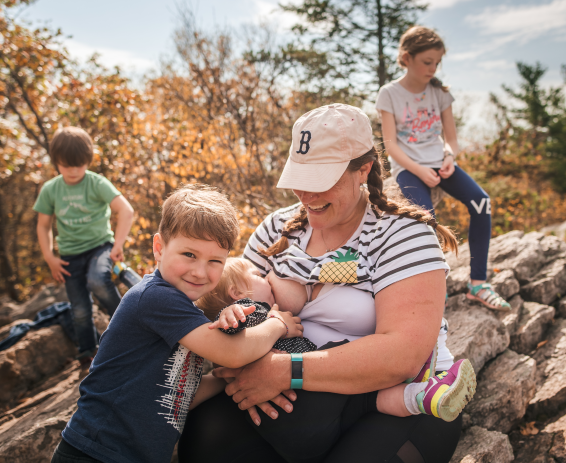
In August 1990, a declaration was signed to promote World Breastfeeding Week (Aug. 1-7) to encourage moms to breastfeed and improve their and their baby’s health and well-being. With all the benefits that come with breastfeeding, the decision to nurse also brings many challenges – including the many obstacles that come with nursing on trail. But don’t let that keep you from hitting the trails with baby. To help you overcome some of the fears you might have about breastfeeding on trail, we’ve gathered some firsthand tips from our Hike it Baby families to help you breastfeed on the go trailside.
Practice makes perfect
It takes some practice playing with your SSC carrier to drop baby down lower so they can latch and you are still comfortable. I keep the waist the same and loosen straps and just keep adjusting baby so that he can latch. Nursing camis work best because you have one shirt under your SSC hip belt. Try to make sure the shirt over your cami is not under the belt. It’s not the end of the world but it takes a little longer having to pull it out to get it up. I often pause until I get him lactched and then I can keep going. It’s easier to readjust after they unlatch while on the go. Practice before you go out on the trail (or store). It helps with your confidence when they are hangry. – Keira, Lexington Branch 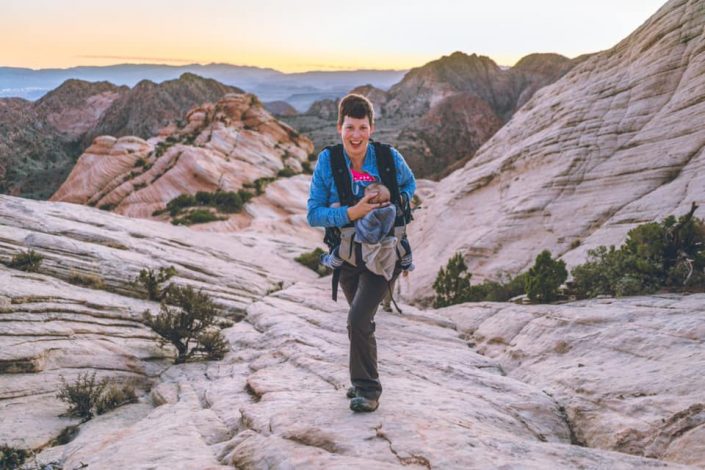
In a front carry SSC, wearing layers and practicing loosening the shoulder straps to lower the baby is key! Nursing tanks with a shirt over makes it easy to lift the top shirt and still have a covering on your stomach. It also prevents baby from sticking to you (I have sweaty kids) while hiking. With a little practice, I was able to very discreetly feed my son on the trail or out in public and keep going. – Suzanna, Akron Branch
Use gear that works for you
I really love hiking with a short woven wrap because it makes it really easy to move baby from back to front or hip to nurse and keep on moving. For toddlers who want to walk on their own feet but may still want to nurse, a ring sling is awesome. They pack down small and it's super fast to get kid up and then back down when they're ready. – Courtney, Charleston/Lowcountry Branch
For me, layers are great. My favorite combo on the trail is a synthetic nursing tank top with a zip jacket or button-down shirt. Not having to pull my clothes up or down in weird ways allows me to get baby to latch quickly and usually I don't have to stop and remove my pack, etc. – Sarah, Albuquerque Branch
Learning to nurse in a carrier was one of the most freeing skills I ever acquired as a parent. I could simply loosen the straps on my SSC carrier to give my baby access and she would contentedly nurse as I walked along. In fact, she got so used to nursing in the carrier that she would grab for the carrier, even when home to tell me she wanted to nurse! The carrier hood also served as a good cover for those times I wanted to be more discreet. It worked so well that I once had a Monk (we were visiting a monastery) come up and pat my daughter on the head when she was nursing, thinking she was simply snuggling! – Rachel, Charleston/Low Country Branch
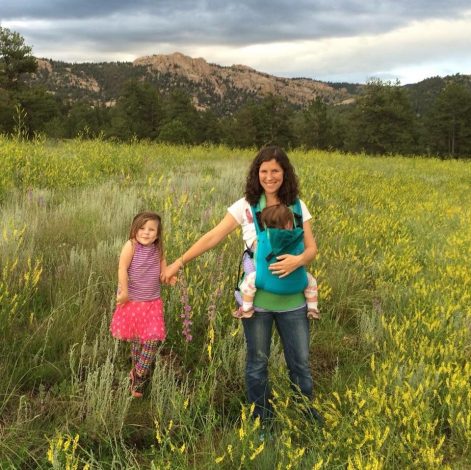
I loved how so often you couldn’t even tell I was nursing, like in this photo. – Rachel
Minimize breastfeeding stress on trail
If you’re nervous or shy about nursing in public or on the trail, find another mama to nurse with! It's a huge confidence booster when there are 2+ of you sitting together feeding your babies. It definitely helped me the first couple times nursing in public without a cover. – Sandy, South King County Branch
My advice is to make it awesome. Find the best possible spot with the best possible view and own it. Make it something to look forward to. – Kathryn
I personally don't like nursing in a carrier while walking/hiking because my kids would gag or choke if I was moving. I LOVE the "no hiker left behind" mantra of HiB because I never feel awkward asking to take a nursing break. Luckily, both my kids are fast eaters, so it's never a long stop. My advice: if you're not comfortable hiking while nursing, don't feel bad about asking to stop! – Colleen
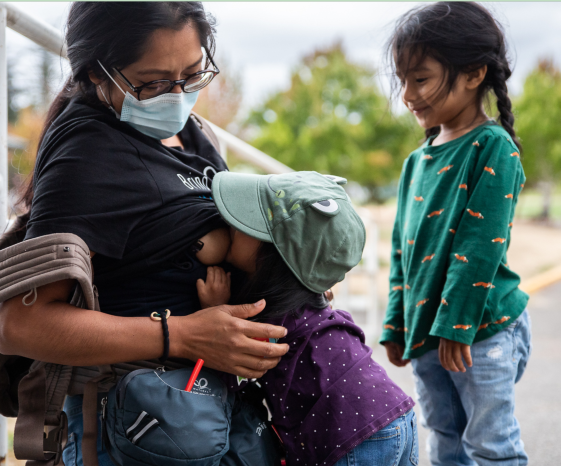
What are some ways you’ve successfully nursed on trail that weren’t mentioned here? We’d love to hear your tips in the comments below.
Read more:
- Ways to get back on the trail after having a baby
- Babies on trail: 4 ways to feed your baby on a hike
- 9 Tips for soothing a cranky baby on the trail
- How to prevent clogged ducts on trail
Photos by Jessica Human and Andrea Leoncavallo, as well as courtesy of Kiera Wickliffe and Rachel Adams.
ABOUT OUTGROWN
OutGrown is a 501(c)(3) nonprofit that works to create a world where everyone can enjoy the physical and mental benefits of spending time outside. We are focused on creating opportunities and removing barriers to access so families with babies and young children can take their first steps outside. We believe all families have the right to connect with nature, benefit from spending time outdoors and be inspired to a lifelong love of nature. Since its grassroots inception in 2013, OutGrown is a growing community of 280,000 families and over 300 volunteer Branch Ambassadors. More information on all of our programs can be found at WeAreOutGrown.org
EDITORS NOTE:
We hope you enjoyed reading this article from OutGrown. We’re working hard to provide our community with content and resources that inform, inspire, and entertain you.
But content is not free. It’s built on the hard work and dedication of writers, editors, and volunteers. We make an investment in developing premium content to make it easier for families with young children to connect with nature and each other. We do not ask this lightly, but if you can, please make a contribution and help us extend our reach.
Related Content


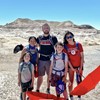


Comments